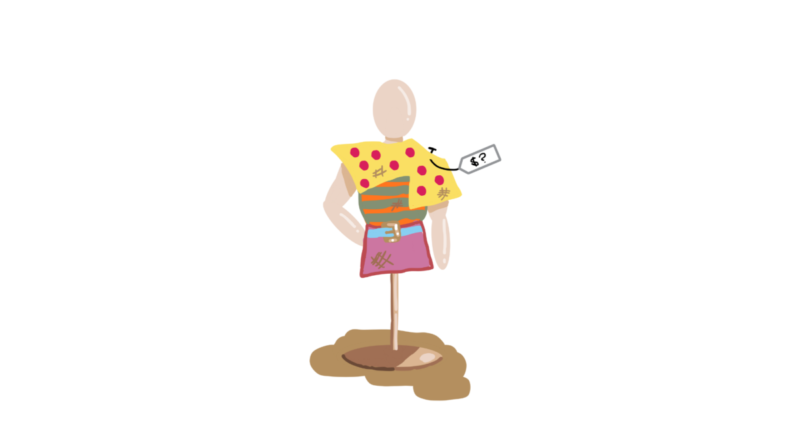Reselling clothes is not the evil it’s made out to be
PHOTO: Graphic by Maya Delaney
By Elina Hibel
BlueDevilHUB.com Staff–
Shoppers are blaming rising thrift store prices on resellers. But it’s corporate greed that’s really to blame.
In the last few years, the popularity of thrifting has skyrocketed, specifically among Gen-Z. Thrifting has become a way to build an extensive and unique wardrobe while still staying on a budget.
What many used to view as an activity reserved for low income people, has now become a trend that people of every socioeconomic status enjoy.
With the rise of online shopping, thrifting has also migrated from brick-and-mortar stores, to websites like Depop and Ebay. Platforms like these allow users to sell primarily used clothes. This has bred an influx of resellers.
Resellers tend to fall under two categories: people who resell their own personal clothing, or people who buy from thrift stores or used-clothing wholesalers with the intention of selling them for profit.
A common argument against resellers is that they are stealing from the poor. The logic used is that mass-buying clothes takes away clothes from people whose only option is to buy from thrift stores.
However, this is simply not true. In 2021, Goodwill handled more than 107 million donations of used goods, the majority of which is used clothing, according to Brittany Dickinson, Manager of Sustainability for Goodwill Industries International, in an interview with the Washington Post.
The reality is, thrift stores are overflowing with clothes. The amount of clothing being bought up by resellers is insignificant compared to the amount donated. Yes, maybe low-income people won’t be able to score a $3.99 2000s velour Juicy Couture tracksuit. But necessities will never go out of stock.
It’s far easier to use resellers as a scapegoat, but we are blaming the wrong people.
Goodwill’s whole brand is that it is for the people. Their mission statement on their website reads that their purpose is for “strengthening communities, eliminating barriers to opportunity and helping people in need.” Yet they raise the prices out of pure greed, because they know the demand is increasing. The reason why it’s harder for low-income people to purchase clothing is because Goodwill and others are raising prices, not because of small resellers.
Another reason why people resent resellers is the markup. If you scroll through Depop you will be bombarded with used clothes being sold at a 700% markup from the price they would be at stores like Goodwill or The Salvation Army.
To many, this markup seems unwarranted, but the reality is that reselling takes time. Many of these online stores curate their selection to achieve a specific aesthetic or to serve a certain group of people.
Junior Caden Castles spends about two hours a week searching through racks of discarded clothing looking for garments to resell on his Depop account. He will usually spend 30 minutes to four hours browsing the thrift store, and usually walks out with only five to 20 pieces.
It’s important to factor in the time it takes to source, clean, possibly mend, photograph and then list the items. Not to mention the trips to the post office and the money lost from the fee Depop collects. “I sold something for $135 and only got $95. (The Depop fees are) ridiculous, like why do they need to take $40 off of your profit?” Castles said.
After accounting for all of this, resellers might not be making the profits you would expect.
There is also skill and knowledge required to run a successful business. “You need patience,” Castles said. “Research is important, knowing what you’re selling, knowing the tags and just putting the right stuff out there.”
It’s easy to scoff at an ugly shirt being sold on Depop for $40 simply because it’s ‘vintage.’ It’s easy to catch yourself thinking ‘I could’ve bought that from Goodwill for $3.99.’ And the reality is yes, you could have. But you didn’t.


